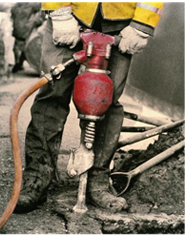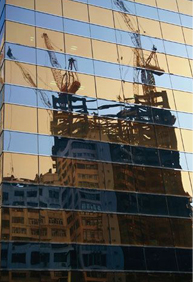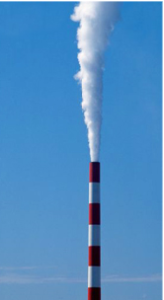Community & Environment
Our Commitment
Introduction
To reduce pollution, noise and vibration from construction activities and vehicles. Montasser Implement a Construction Environment Plan, Mich reduces pollution, noise and vibration from construction activities and vehicles to adjoining neighborhoods, reducing noise and vibration impacts through scheduling and coordination with adjacent construction activities, consider noise barriers Were practicable.
Construction sites are notoriously dirty and noisy. Yet with some forethought, much of the pollution generated and noise associated with construction activities can be averted. This becomes increasingly important as the aging infrastructures and built environment of most countries begins to reach the end of their useful lifespan, and are in need of major renovation or replacement. It is also a critical consideration at the Montasser Construction sites, Where most of the infrastructure and all of the buildings will be new, involving heavy construction phased over several years. For the benefit of those who live and nark nearby, or early occupants of the site, and for the construction workers themselves, every effort needs to be made to make the construction process less wearing, less stressful and quieter.
Ecological
Ecological Exhaust from diesel engines contains particulate matter, soot, nitrogen and sulfur oxides, and toxic air pollutants in large quantities. These pollutants contribute to decreased air quality, acid rain and global warming.
Use of emissions control technologies and ultra-low sulfur fuel for construction vehicles is important, as it lessens the amount of air pollution at the site and in the surrounding neighborhood. Limiting idling times for these vehicles further reduces air pollution. Restricting their operation to staging areas located away from site occupants and fresh air intakes decreases people’s exposure to exhaust times. The negative contribution of a construction site to neighborhood air pollution can be decreased further by operating equipment on alternative fuels such a bio-diesel and compressed natural gas.
Excessive noise is a form of pollution. Efforts to manage noise by using state-of-the-art equipment and scheduling activities that are acoustically disturbing at the least disruptive time of day, MI help to alleviate this condition.
Economic
Economic According to the National Biodiesel Board, one of the great advantages of bio-diesel fuel is that it can be used in existing engines and fuel injection equipment with little impact to operating performance. It costs little more than regular diesel fuel and offers enormous benefits in terms of human health and well-being, as well as environmental quality. In using a low-blend of bio-diesel fuel, any increase in cost will be off-set by an increase in diesel quality, since low-blend levels of bio-diesel greatly enhance the lubricity of diesel fuel. Other alternative fuel vehicles are also available. In order to minimize pollution and noise, alternatives such as electric and hybrid cars and vans are in check.
Many of the strategies intended to make a construction site more humane are just now being developed and brought into the mainstream. These include mufflers on all engine driven equipment, quieter methods of construction through the use of equipment that reduces both noise and vibration, and a more extensive use of alternative fuels, which generate much less pollution.
The costs of cleaning and repairing building facades that have been affected by such emissions are enormous – consider the recent clean-up that the City of Paris has had to undergo for just this reason.
Neighborhood
Neighborhood Excessive noise and vibration from construction activities can be greatly disturbing to the II community. Use of newer equipment with appropriate mufflers, and the provision of adequate warnings when any especially noisy or disruptive work is planned at the site, and maintenance of the established schedule for its completion, can help community residents to plan around any necessary disruptions, which will in turn, help to alleviate concern. Changes in traffic patterns and disruptions in utility services are also likely to negatively affect people who live and work in the area surrounding the Down Town construction sites. Careful planning to limit these disturbances will provide a safer, healthier and more tranquil environment. All the emission control strategies mentioned above will be key to the maintenance of the most valuable neighborhood asset: clean air.
Design Strategies
Design Strategies Perform an analysis of the vulnerabilities of buildings, structures, and the utility infrastructure surrounding the site. Make provisions to protect these elements from damage during the construction process.
Noise
Noise Implement measures to reduce noise from construction activities. Scheduling should be the first step of this process. Combining noisy activities into a limited time period reduces the total number of hours of sound disturbance. The simultaneous scheduling of noisy activities does not create a significantly louder environment during concurrent hours.
Another important strategy to reduce sound pollution on the construction site is to avoid major noise-generating, building methods whenever possible. For example, drilling piles or driving them with a sonic or vibratory pile driver is a quieter approach than using impact machines. Also, certain alternative demolition methods, such as sawing or disassembly rather than impact demolition, can limit noise production.
Construction equipment itself can also be altered to limit noise and particulate pollution by installing mufflers on all engines. Yet another means for deadening construction noise is through the use of sound barriers. These can be mounds of excavated earth, dense areas of vegetation, or temporary building materials such as sheet piling or concrete barriers. Finally, as part of the construction staging plan, the loudest site machinery and construction tasks should be as “remote” (via scheduling or placement) from noise sensitive areas as possible.
Vibration
Vibration Implement construction methods that reduce the impact of vibration on and around the site. Scheduling is the most effective strategy to this end. As in the case of noise management, schedule high-vibration construction operations during the periods when they will be least offensive. In neighborhoods with residential buildings, daytime will be the opportune time, while in a strictly commercial neighborhood with limited evening occupancy, nighttime may be the least disruptive period during which to perform construction activities that cause high vibration. Unlike noise, vibration levels are additive , so processes such as ground-impacting and earthmoving should be scheduled in a staggered fashion. Alternative construction methods can also help limit vibration. The avoidance of impact pile-driving and wrecking ball style demolition, when possible, can do much to curtail excessive vibration. Vibratory rollers should also be used sparingly, especially in vibration sensitive areas of the site.
Materials Stanging
Materials Stanging Develop a materials staging and construction access plan prior to the start of construction. The intent of this plan is to limit disruption to the normal operation of the neighborhood as much as possible. Locate truck staging areas where they will have the least impact on traffic and air quality.
Air Pollution
Air Pollution Controls Air pollution controls are a critical component of the Construction Environment Plan. Less-polluting fuels such as bio-diesel or compressed natural gas for non-road construction equipment provide a means of accelerating the implementation of the proposed EPA emission standards.
The EPA’s Voluntary Diesel Retrofit Program for all world cities, which was started in September 1998, mandates the installation of an oxidation catalyst on all large off-road diesel construction equipment. (An oxidation catalyst is a device that limits emissions by converting diesel pollutants including particulate matter, hydrocarbons, and carbon monoxide into less harmful emissions such as water and carbon dioxide.
Our Plan
Welcome to our vision of a healthier world
Ecomagination puts into practice MC’s belief that financial and environmental performance can work together to drive company growth while taking on some of the world’s biggest challenges. Learn about the MC commitment to products and services that are as economically advantageous as they are ecologically sound, in our Commitment.
Global View
We face serious challenges as our earth Struggles to keep up with the demands we place on it.
Oil and gas reserves are low, people lack clean water, and energy prices are soaring.
Population growth, urbanization trends, climate changes and water availability factor in to the relationship between consumption and environmental impact.

Population Growth
Developing countries are growing at an unprecedented rate-and population growth is driving basic human needs, including access to energy and clean water. This increased demand on our natural resources will have serious environmental consequences.

Uncontrolled Urbanization
Urban sprawl is a demanding force. It strains energy supply, requires more infrastructures and consumes land, all while damaging the environment.
Urban spiral directly affects the quality of life of people living in and around cities.
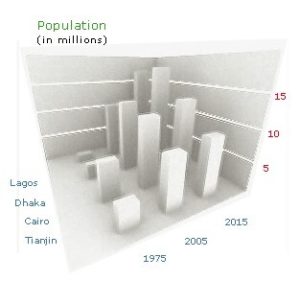
Climate Change
Fluxuations in CO2 and temperature Over the last 300,000 years as inferred from Antarctic ice-core records.
AS concerns build over greenhouse gas emissions and changes in our weather and geography, the policy landscape is being transformed as well. Companies now face serious climate regulations as we Iook to a low carbon energy future.
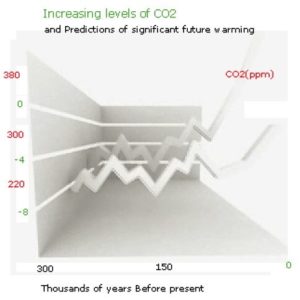
Drinking Water Supply
Population growth and urbanization, as well as industrial and agricultural growth, are creating demands for fresh water that will exceed the sustainable supply, already, more than 1 billion people across the global lack clean water.
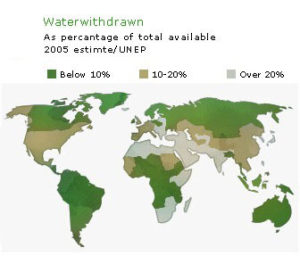

Increase Revenues from Ecomagination Products
MC will grow revenues from products that provide significant environmental performance advantages to customers.

Reduce our Greenhouse Gas Emissions
MC is committed to improving the energy efficiency of its operations and reducing company greenhouse gas emissions.

Keep the Public Informed
This website is just one way MC publicly reports its progress in meeting its goals. MC regularly engages stakeholders on its ecomagination commitments.



